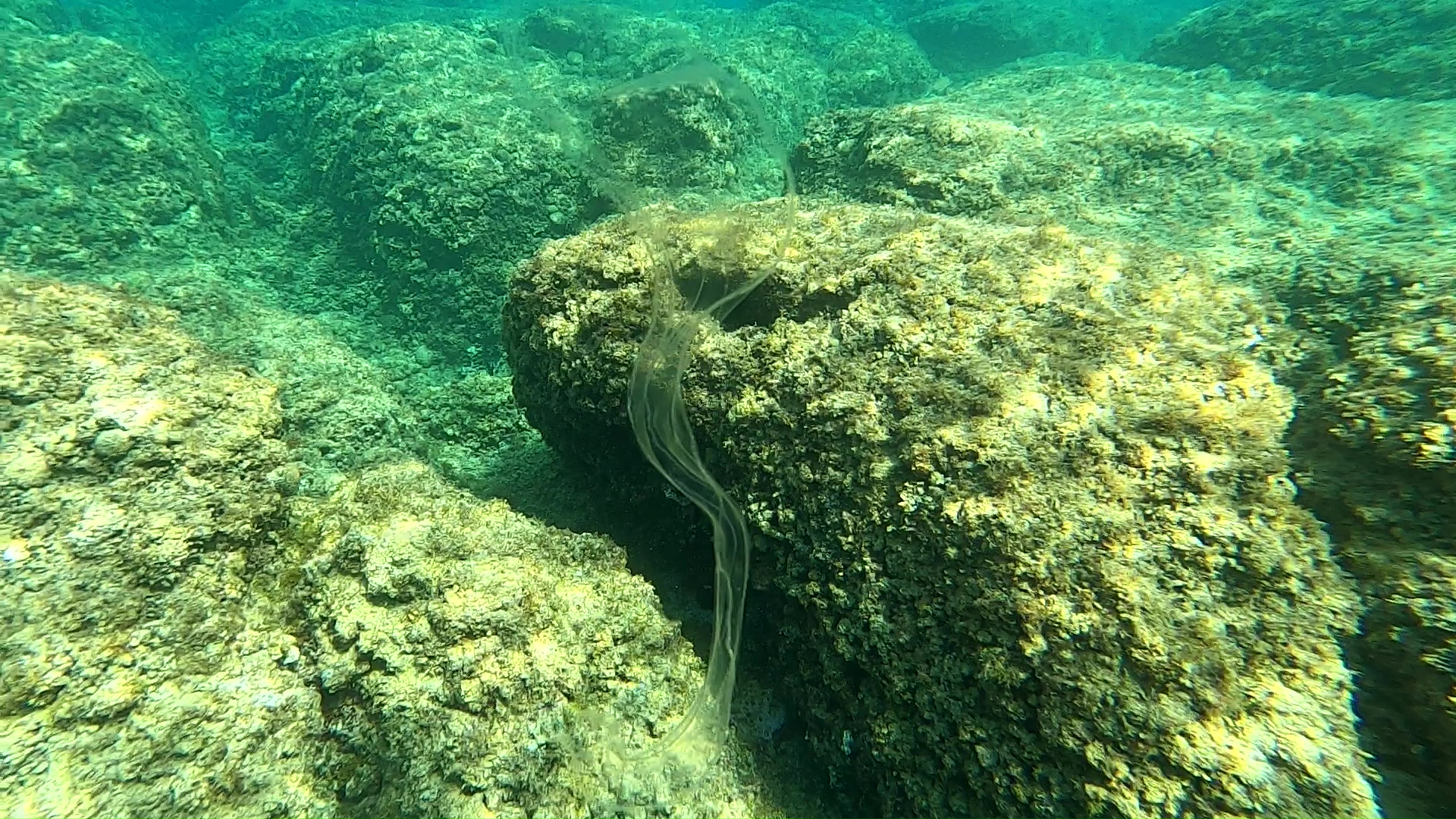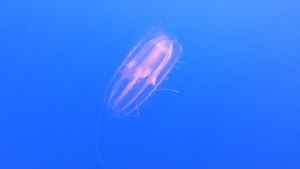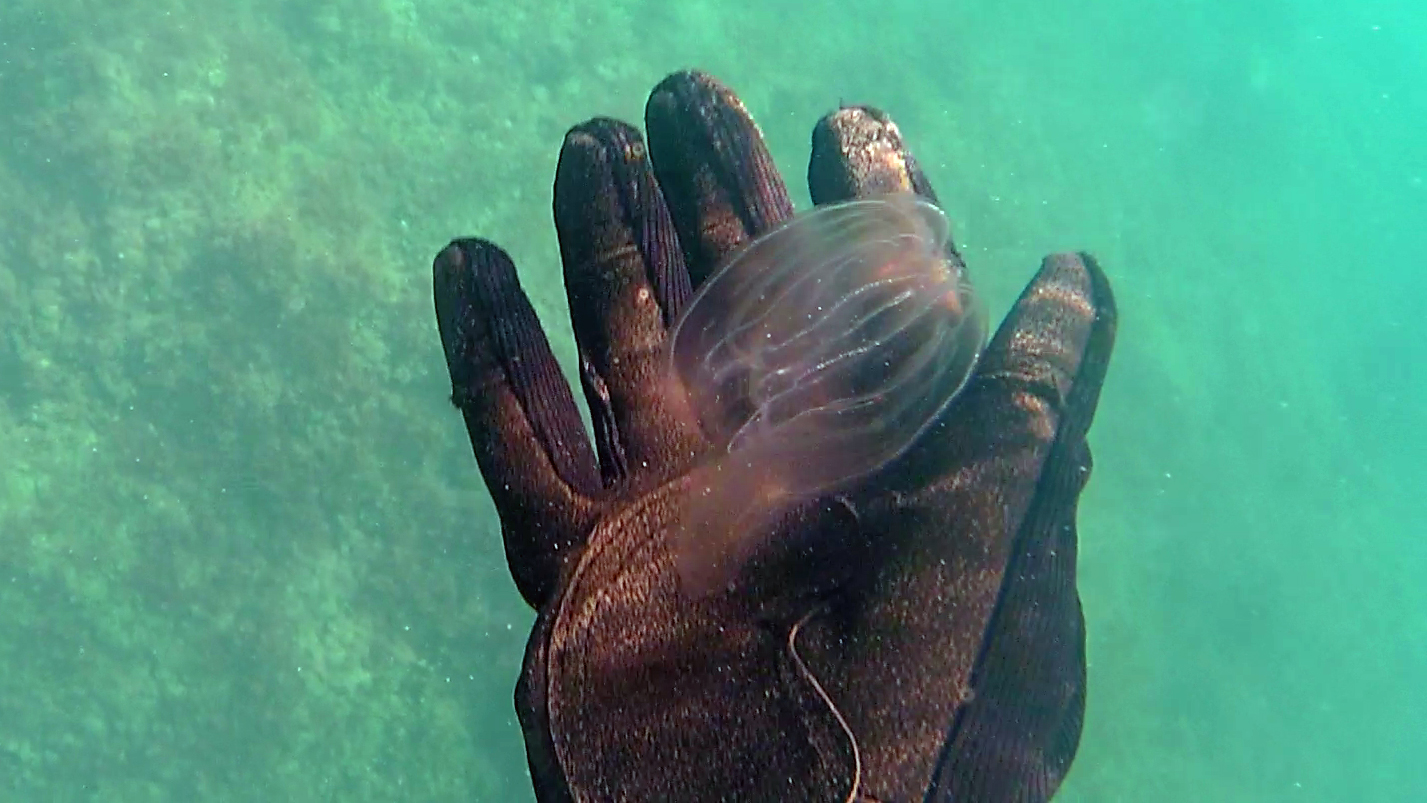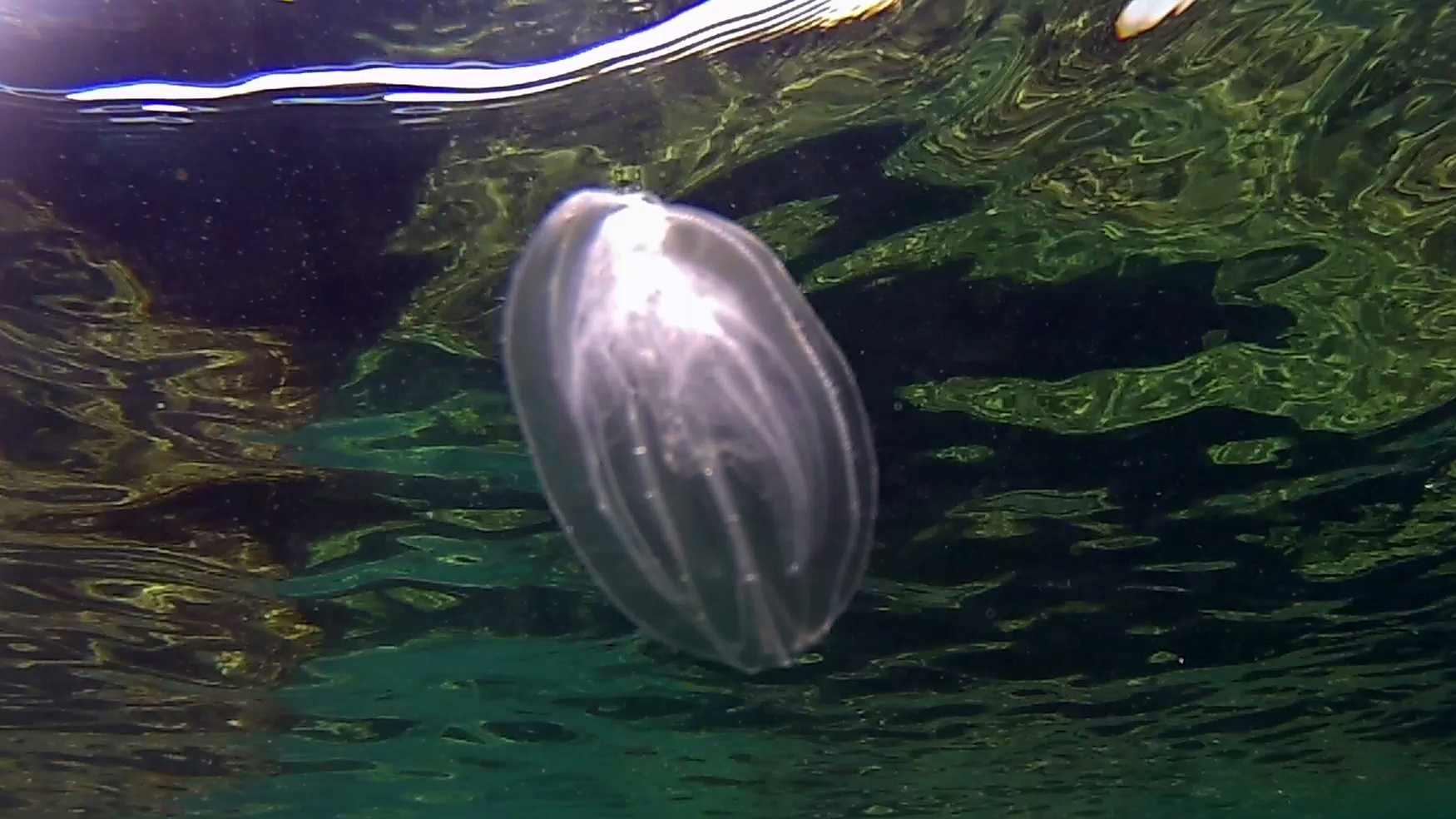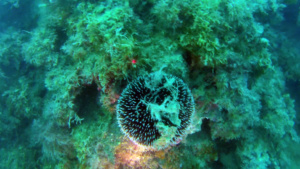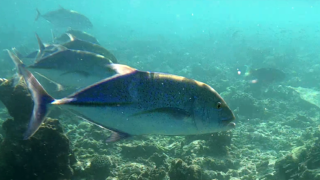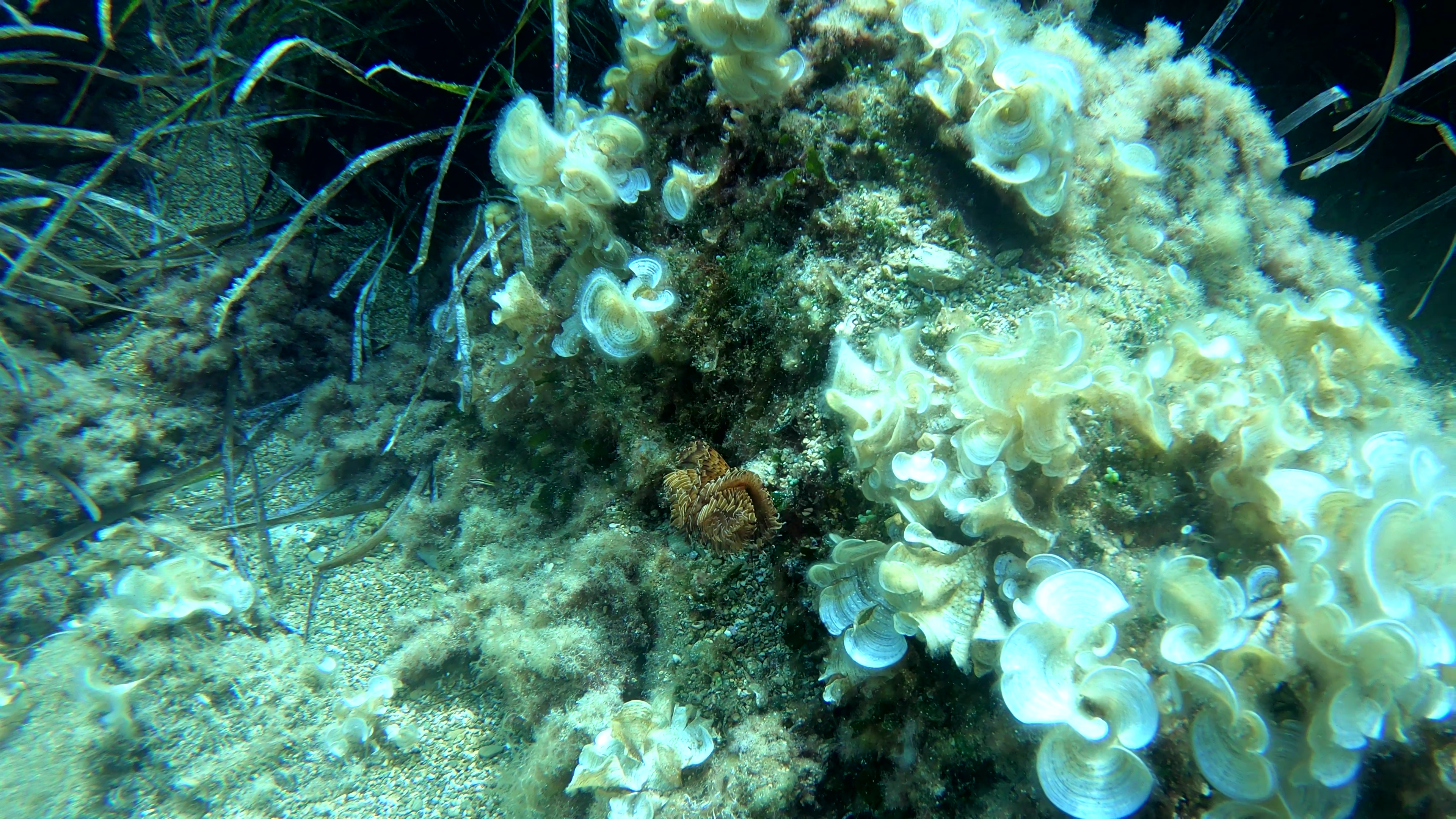Cinto di venere - Cestus veneris
Ctenoforo di vetro - Bolinopsis vitrea
Ctenoforo tentacolato - Bolinopsis infundibulum
Noce di Mare - Mnemiopsis leidyi
The phylum Ctenophora (from the Greek: ktenos, “comb” and phoros, “which bears”), or Ctenophores, is made up of about 100 species of marine animals, mainly predators or planktonic filterers, with a transparent body almost entirely made up of water and a few centimeters long. Recent research suggests that the species belonging to this phylum have developed completely independently from other primitive marine species (such as sponges), being devoid of much of the physiological characteristics that characterize the most advanced species. Ctenophora Ctenofori ctenophore comb jellies intotheblue.it
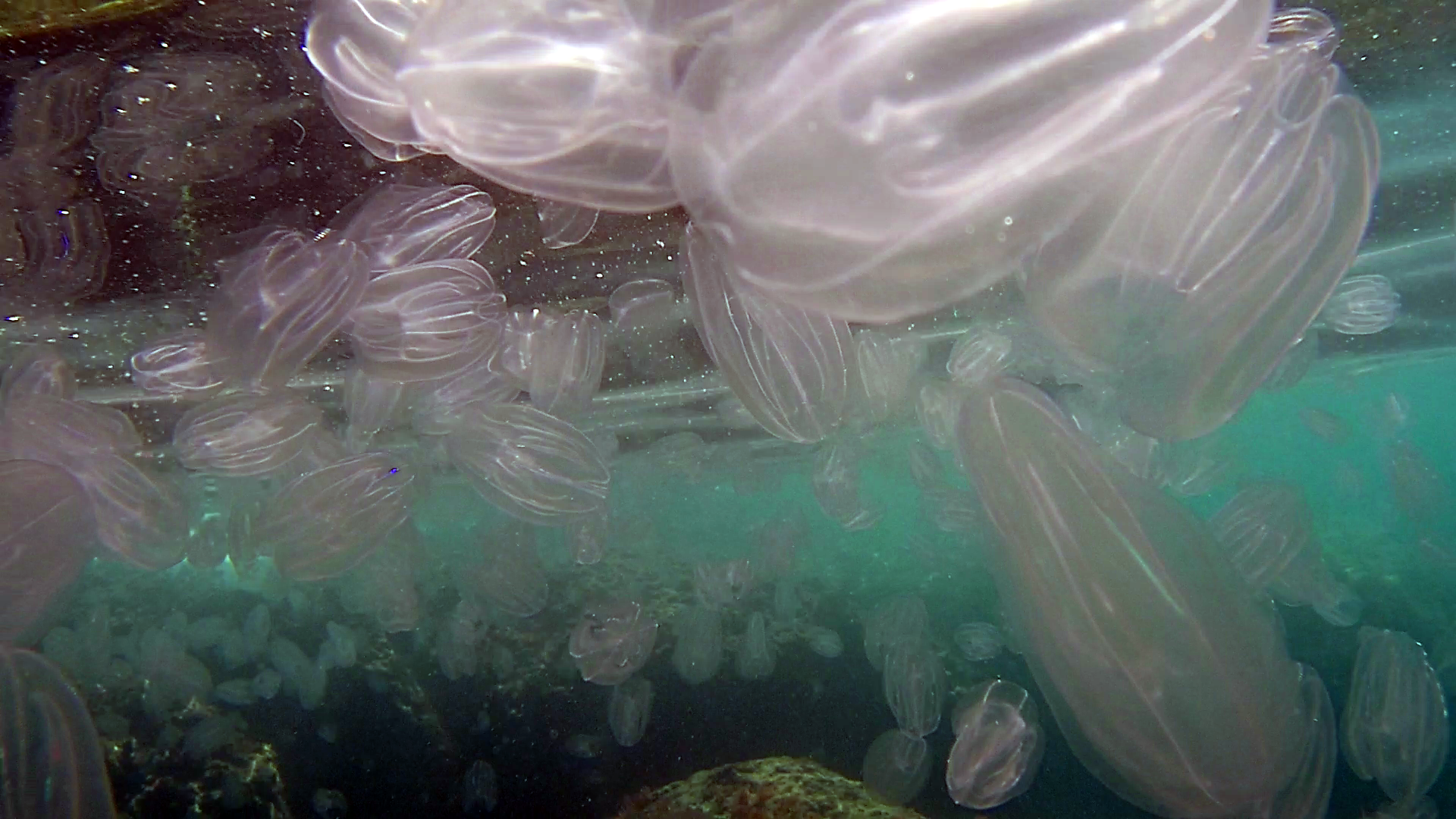
Mnemiopsis leidyi – Eccessiva proliferazione per il riscaldamento marino – Excessive proliferation for marine heating – intotheblue.it
Anatomy and physiology
With the exception of some benthic species, with the flattened body able to crawl on the bottom, most of the Ctenophores show a more or less spherical shape. From the upper part of the body, the apical pole, 8 rows of meridian bands depart, each provided with a series of combs or ctenidia. Ctenidium is a vibrating paddle equipped with eyelashes which, by beating in coordination with the others, allows the organism to move slowly in the pelagic environment.
The coordination of the movements of the combs is regulated by a statocyst, a static sense organ placed on the apical pole, which connects the nervous system to the ciliated bands and allows them to vibrate with the same frequency or with different frequencies, depending on the movement that intends to complete the animal. As for the Cnidarians, of which they were mistakenly believed to be relatives in the past, the nervous system is not centralized and consists of a simple subepithelial nervous network.
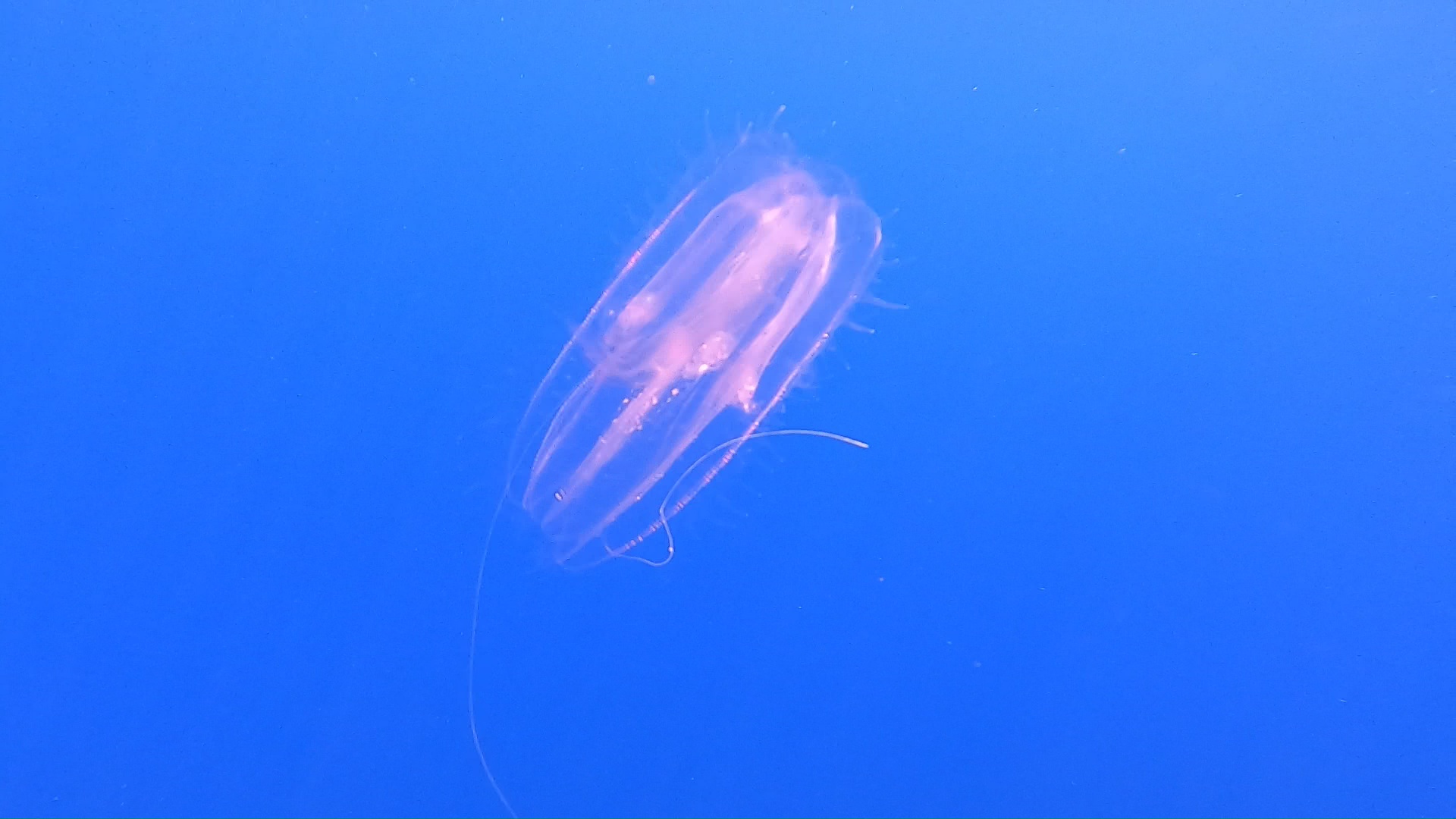
Bolinopsis vitrea – Ctenoforo di vetro e Gambero trasparente – Glass Ctenophore and Transparent Shrimp – intotheblue.it
Reproduction and development
Ctenophores are sufficient hermaphrodites and self-fertilization is an adaptation to the solitary life conducted in the open sea. The gametes, eggs and spermatozoa, are produced in the gastrovascular cavity and, through the mouth, expelled outside where fertilization takes place. The zygote gives rise to a planktonic larva, called cidippid, which metamorphoses into an adult. Some species have two sexual maturities (dissogony), one in the larval stage and one in the adult stage, interspersed with a period in which the gonads are atrophic; this mechanism serves to promote rapid population growth. Ctenophora Ctenofori ctenophore comb jellies intotheblue.it
 English
English Italiano
Italiano
